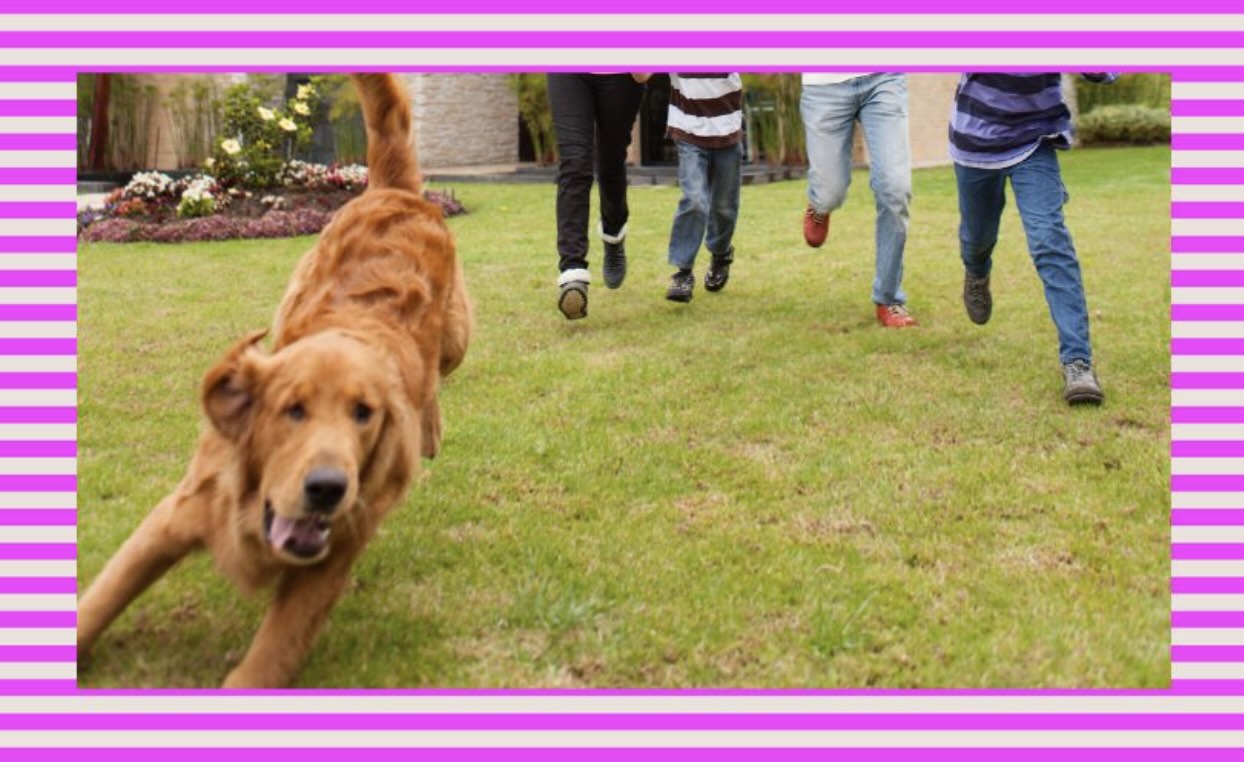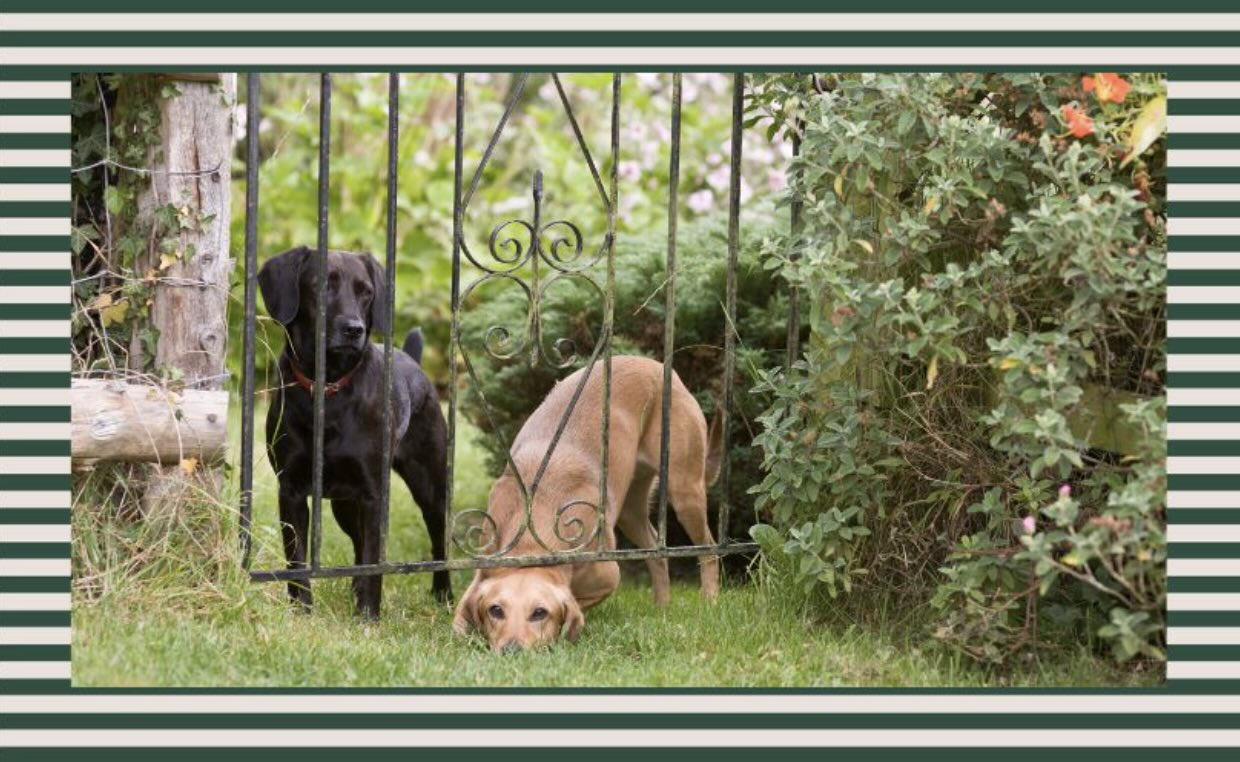The leash slips from your hand. Someone accidentally leaves the door open. You thought the fence gate was closed, but it wasn’t. A sudden squirrel catches you off guard. You thought Fido was ready… but they weren’t.
Whatever it is: When your dog gets a taste of freedom outside, they’re gone.
Many different things can push our pups to run away from us. If you dream of safe off-leash excursions where your dog stays nearby and checks in regularly—or just move peace of mind around your own home and yard—here’s where to start. We’re cheering for you!
First: Understand your dog’s behavior
Before we start any management or training plan, we should try to understand where our dogs are coming from. Running off is a frustrating (and often dangerous) pet behavior. But I promise your pup isn’t doing it to make you miserable!
Why do dogs run away?
- Dogs have a natural instinct to investigate their environment. It’s normal for a canine to want to explore the world around them!
- Some dogs feel cooped up in modern pet homes. Boredom can create determined escape artists.
- Dogs might bolt out of fear. This is especially common around Fourth of July and New Year’s celebrations.
- It can be tough to resist temptations like squirrels and other critters. Sometimes our dogs get caught off guard, and their instincts tell them to take chase.
- Dogs can get confused around commotion. (Just like us!) Moving into a new home? Inviting guests over? Experiencing some other lifestyle change? All these things can fluster our dogs, making them more likely to dash off.
Each dog is an individual
Whatever the reason for your pup’s breakaways, know that some pets are more prone to running off than others. Different dogs have different ranges they’re comfortable straying from their social group—not to mention varying interest in exploring novel stimuli in the first place. (These preferences are based on both genetics and ongoing training. It’s never nature or nurture; it’s always nature and nurture!)
With the right mindset and techniques, you should be able to make great strides toward off-leash reliability with your pup—but avoid comparing your progress to other pets. It’s about finding what works for you.

Second: Make sure your dog feels fulfilled
Proper fulfillment won’t automatically fix every problem you experience with your dog—but it is one of the very first things you should address to set a strong foundation. (And if your dog runs away primarily because they’re bored? Then providing more fulfilling activities might indeed put a stop to their escapades!)
We’ve put together plenty of guides to help you enrich your pup’s life.
- Find your dog’s favorite enrichment activities
- 101 easy dog enrichment ideas
- Does enrichment have to be expensive?
- How to use puzzle toys thoughtfully

Third: Manage your dog’s environment
If you know your dog is a flight risk, you can take some initial steps to minimize the odds of them getting away from you in the first place. Then, once they’re no longer practicing the behavior of running off, you can start working on more specific training!
Leash up (and don’t be afraid to double up)
I know it’s an amazing feeling to watch our dogs explore off leash—but if your pup struggles with running away, the best thing you can do is keep a leash on at all times until you’re more confident they’ll stay nearby. (My dog spent years on leashes and long lines before experiencing regular off-leash time.)
Here are some options:
- Use a martingale collar or harness designed for escape artists.
- If you’re really concerned about your pup getting away again, double up your tethers. Consider attaching one leash to a collar and another to a harness as a backup.
- Give your dog more freedom with less risk by using a long line instead of letting them fully off leash.
- Think about having your dog drag a leash during times of chaos, like if you have people coming in and out of your home for a gathering or are in the process of moving to a new place.
Use gates, extra latches, and signs at doorways
If your dog has accidentally escaped in the past—maybe due to miscommunication between family members, faulty door latches, or some other fluke—gates and signs are your friend!
Here are some examples:
- A baby gate in front of your door that people are able to step over or unlatch but that your dog can’t get through.
- A sign on your front door that lets delivery people and visitors know your pup might try to run off. It could say something like “Please open slowly” or “Keep closed.”
- An extra latch on any gate you’re worried about. (My parents’ husky can be quite the escape artist. They went for the budget route here and simply clipped an extra dog collar around their backyard fence gate. This way, even if the original latch comes open, there’s a backup in place.)


What’s a Rich Text element?
The rich text element allows you to create and format headings, paragraphs, blockquotes, images, and video all in one place instead of having to add and format them individually. Just double-click and easily create content.

Static and dynamic content editing
Static and dynamic content editing
A rich text element can be used with static or dynamic content. For static content, just drop it into any page and begin editing. For dynamic content, add a rich text field to any collection and then connect a rich text element to that field in the settings panel. Voila!
How to customize formatting for each rich text
Headings, paragraphs, blockquotes, figures, images, and figure captions can all be styled after a class is added to the rich text element using the "When inside of" nested selector system.
Fourth: Start some training protocols
Emergency recall training
An emergency recall is a cue—most often a unique sound like a whistle—that you only use in emergency situations. This makes it different from our pups’ regular recall cues (many handlers use “come”) which can become diluted if we overuse them in situations where our dogs aren’t prepared to listen. (I’m raising my hand here! Over time, I actually worked on teaching my dog both an “informal” recall and a “formal” recall for this exact reason.)
Here’s an overview of how to get started with an emergency recall:
- Choose your recall cue. Distinct whistles work well, because they aren’t sounds your dog is likely to encounter in many other scenarios. You want their emergency recall signal to be unique!
- Associate your recall cue with high-value rewards. Begin in a calm, familiar environment. Give your cue, wait a second, then immediately reward your dog with a special treat. Repeat until your dog anticipates the reward before you give it to them.
- Move to more distracting situations. Always follow your recall cue with the reward!
Over time, your dog should become classically conditioned—that means they have a reflexive response—to associate your recall cue with coming to you for a reward.
Relationship building and engagement exercises
The stronger your relationship with your dog, the more likely they are to naturally pay attention to you—and the less likely they are to run off! Relationship building and engagement exercises are all about teaching your pup that you are tons of fun.
Take time to play with your dog each day. Consider teaching them some simple, fast-paced tricks. Embrace opportunities to do things together!
Accessible online resources
Below is an (incomprehensive) list of free and low-cost information put together by professional dog trainers to help you get started.
- Guide: The Collared Scholar’s engagement games
- Blog and video: Denise Fenzi’s stages of dog engagement
- Virtual course: Fenzi Dog Sports Academy engagement through play
- Podcast: Jay Jack on the importance of play
- Infographic: Animal Kind emergency recall training

Fifth: Seek further training help
When in doubt? Get in touch with a professional dog trainer!
Experts will be happy to evaluate your pup’s behavior and environment in person, which can help you understand what’s going through their canine brain when they try to run off. Working with professional trainers has been an invaluable part of building a life I love with my own Australian cattle dog, Scout.









.avif)